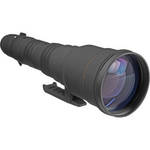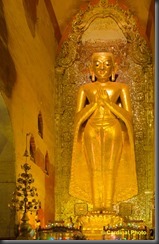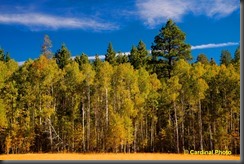Submitted by David Cardinal on Sat, 02/28/2015 - 09:35
Submitted by David Cardinal on Tue, 12/30/2014 - 09:22
Sometimes you just can’t control the clock or the sun. The monastery in Nyaung Shwe (in Myanmar’s Shan State) is famous for its historic round wood windows. But finding them with novices peering out from the study hall inside was a special treat. Harsh light or not, it was a great photo opportunity. Having a certainly helped me capture the full tonal range of the image from light to dark, but another trick was needed to make the image look good…
Submitted by David Cardinal on Tue, 11/18/2014 - 10:20
Submitted by David Cardinal on Tue, 09/09/2014 - 16:50
I get asked all the time to give advice about what camera someone should buy. Far less often I sometimes get asked a much more important question – “What do I need to learn how to do with my new camera before I take it on my vacation, or to some special event, and try to use it effectively?” Modern cameras (even many of those found in smartphones) have way too many features for anyone to master them all. But there are 10 basic skills you should learn. If you purchase your camera at a camera store with actual human salespeople (there are still a few), you can probably have them show you most or all of them before you walk out with your new kit:
Submitted by David Cardinal on Tue, 07/08/2014 - 13:08
I’m often asked what lenses I recommend for various photo subjects – typically right before a reader or client is about to head off on a trip. What often goes without saying is what lenses I don’t travel with. In many cases, these were my “go-to” lenses for many years, but a combination of industry trends has helped me lighten up my traveling kit substantially. The changes aren’t for everyone, but they are worth considering for anyone who has begun to dread traveling with all their gear. Before I plunge in, please remember that I’m not saying these lenses aren’t still some of my favorites, or that you shouldn’t rely on them anywhere and everywhere, just that it is always worth thinking about what you are traveling with and why…
Submitted by David Cardinal on Thu, 01/16/2014 - 08:18
Sometimes you just can’t be where you want to get the right angle on a shot. Or maybe you thought you were, but later you need to use the photo in a different way and want to move your perspective around. Photoshop has always offered some tools to do that, but today Adobe added a powerful new one – Perspective Warp. Using it you can shift the apparent point of view of an image around, even creating combinations of perspectives that could never have been captured in a single photo…
Submitted by David Cardinal on Wed, 10/09/2013 - 18:21
Polarizing filters are typically thought of as a shooting solution for capturing images containing glare, and perhaps for “darkening skies.” But there is another great use for them that is often neglected – making up for harsh light. Sometimes it is difficult to get to a location when the light is still soft, or sometimes – like with the pictured Aspen grove – the subject just isn’t lit until the Sun is high in the sky. A Polarizer can help…
 --by David Cardinal
--by David Cardinal
It has become almost impossible to actually figure out how big a sensor is, or how long a lens is, just by glancing at the specs. For most of the photography industry, for many decades, 35mm was more or less the norm. By definition that meant a standard size film negative, about 35mm by 24mm – corresponding to today’s “full frame” sensors – and a simple measurement of focal length for lenses could be read right of the lens as a result.
Submitted by David Cardinal on Fri, 10/15/2010 - 15:37
For those eager to start making their own digital star trails I've posted a step by step guide along with some sample images I made during a recent trip to Joshua Tree on the B&H blog site, bhinsights.com. You can read the .
by Moose Peterson, exclusive to nikondigital.org
Updated by David Cardinal, September, 2010
Submitted by David Cardinal on Tue, 03/24/2009 - 20:42
Every new digital photographer starts out b being excited at how easy it is to retrieve their images compared to digging them out of slide files or shoeboxes. Then, as the number of image files on their computer grows from hundreds to thousands and tens of thousands the sobering reality sets in. Just because it is on your disk doesn't mean you can find it again. The process of tagging and organizing your images is most often referred to as image cataloging. In this issue we'll speed you through the essentials of setting up a process for cataloging your images and also give you some quick tips about how to use the new image cataloging capability in DigitalPro3 (now even more is possible with !) to accomplish your goals.--David Cardinal
|

Hunting Leopard Okavango Delta, Botswana Nikon D2H, 70-200mm AF-S/VR
|
Printing Great Color:
Profiling your Printer with Colorvision PrintFIX PRO
|
A crucial and too frequently overlooked step in every photographer's workflow is printing images with great color. Until now the process of profiling a printer has been somewhat arcane and very expensive. High end profiling packages like Profilemaker, when combined with the needed hardware, can cost several thousand dollars.
This article is a work in progress, as there is plenty more to say, but since this is a frequent topic in our forums and others I thought I'd start by reposting my reply to a question on the colortheory mailing list:
Pages






 --by David Cardinal
--by David Cardinal
